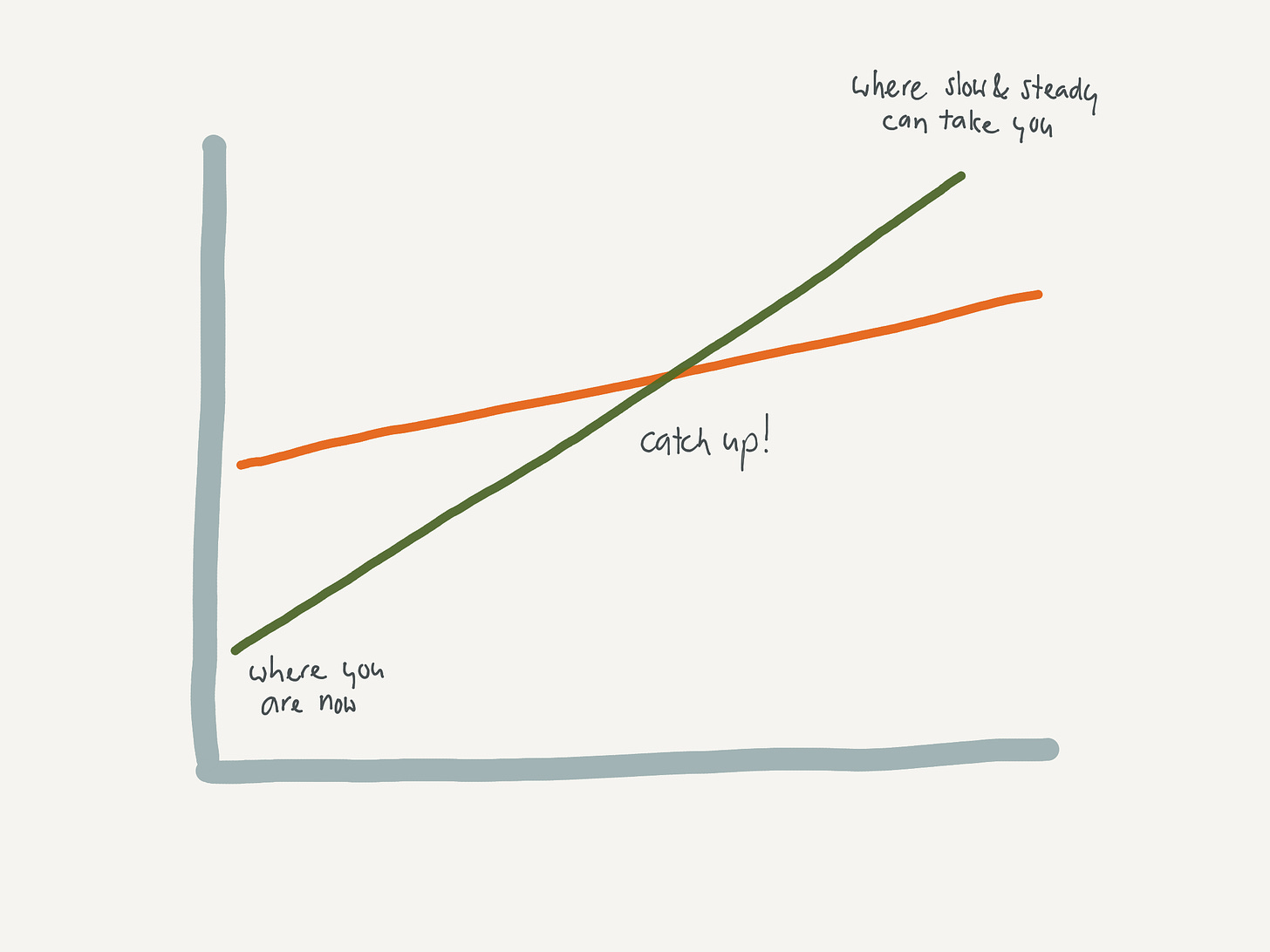Looking to grow or change? Slow and steady does the trick
Hi there,
This week’s issue is about growth and change. Speaking of: I just bought my first house! That turned out to be quite a challenge in the overheated Amsterdam housing market. But like any formidable project, each individual step is doable. It’s a solid reminder that even the biggest things can be achieved by hunkering down and tackling the steps one by one.
So before I get back to packing, let’s dive in.
I’m speaking for myself here, but you probably have them in your field too: people who seem to be in a completely different league. The super-achievers. And in a world where you’re expected to share what you’re working on and what you’ve accomplished – I’m looking at you, LinkedIn and Instagram – it’s hard not to feel the pressure. Do I measure up?
I’m not going to tell you to ditch the ambition. But I’ve discovered something that helps counter self-doubt along the way: embracing the slow and steady approach.
Slow and steady does the trick
It’s not about how good you are at something when you start, but about getting a little bit better every day. Slow and steady. Here’s John Ousterhout, professor of Computer Science at Stanford:
The key thing here I think is that slow and steady is great. You don’t have to do anything heroic…. If every day you just think about learning a little bit more and getting a little bit better, lots of small steps, it’s amazing how quickly you can catch up and become a real expert in the field.

This approach creates the time and space you need to grow. You don’t have to frantically switch gears every year or month or week. There’s tremendous power in getting just a little bit better at something every day. And it’s far easier to sustain than sudden, sweeping changes. It just doesn’t feel as spectacular.
Taking charge of your own growth
Not long ago at Blendle, we took a look at how we do performance reviews. The Engineering Growth Framework that Medium developed was a great source of inspiration. At its core is the idea of continuous improvement, instead of subjecting people to a big nerve-wracking performance review twice a year.
Combine that with a super clear model, and it becomes evident what you can do to grow. You can use their open source tool to score yourself.
Scoring your own performance is nothing new. Benjamin Franklin was doing something of the sort nearly 300 years ago. He wrote in his autobiography about the thirteen virtues he assessed daily in his own behavior.
A value framework like Ben’s, or a model with different tracks for development like at Medium – both are ways to discover where there’s room for improvement. After all, if you can’t measure your performance, it’s hard to know how you can grow. Easy to see why self-scoring is such a popular mechanism.
Here are three things you can try today:
Maybe your workplace doesn’t focus on employee growth. Or perhaps you work freelance or run your own business and have to take care of everything yourself. However you work, here are three tips to try:
Keep the idea of “slow and steady” in mind. The more you visually encounter the idea of getting a little better every day, the more effective it becomes. Put the professor’s graph on your screensaver. Add “Slow and steady” to your lock screen. Post it to your mirror, stick it on your fridge. You can also add a recurring item to your to-do list.
Schedule a performance review with yourself. Whatever your organization’s official process, don’t be limited by it. Take the time to sit down and reflect: If I had a performance review today, what would I bring to the table? What do I need to work on? What’s going well? It doesn’t take long and can give you invaluable insight.
Find a coworker who’ll give you feedback on a regular basis. In an organization where feedback is rare, you’ll have to take things up a notch to get what you need. But that doesn’t have to be complicated. Find a colleague you work with a lot and schedule a mutual feedback talk once a month. Take a walk together; loop around the block. Call it your feedback loop. And let the growth begin.
Slow and steady.
Have a good week,
Rick



